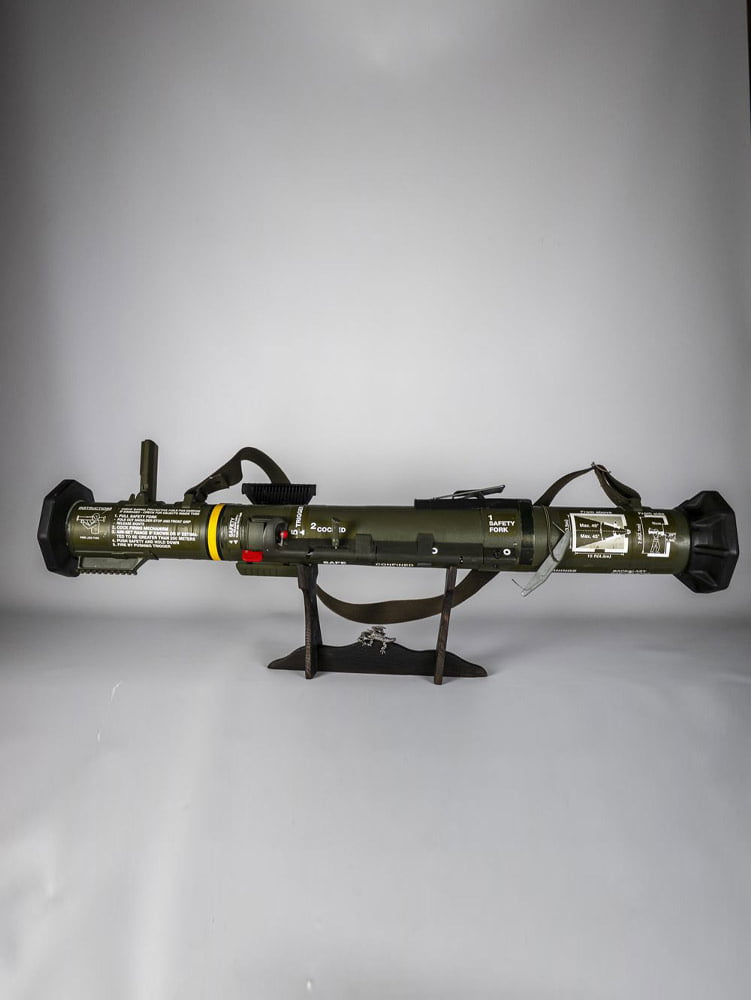
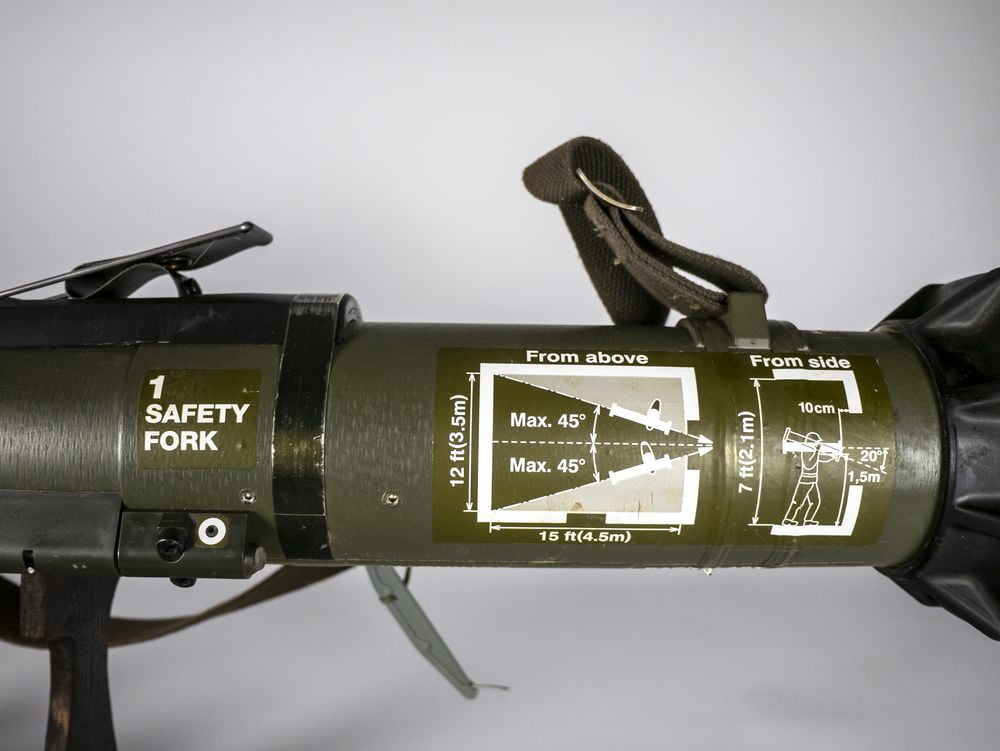
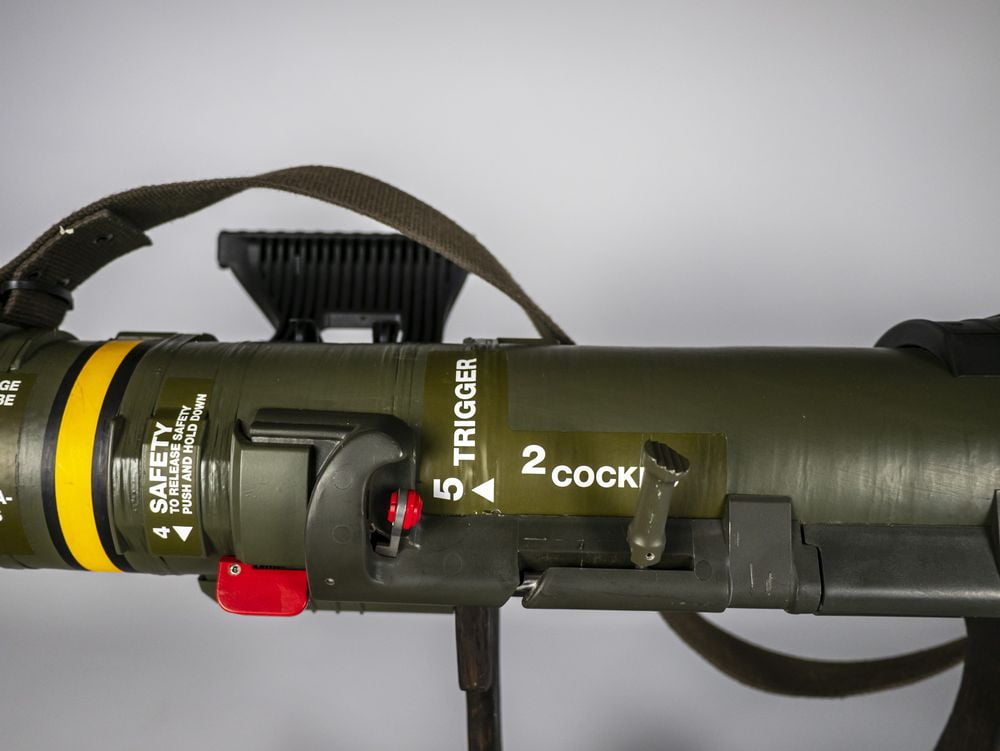
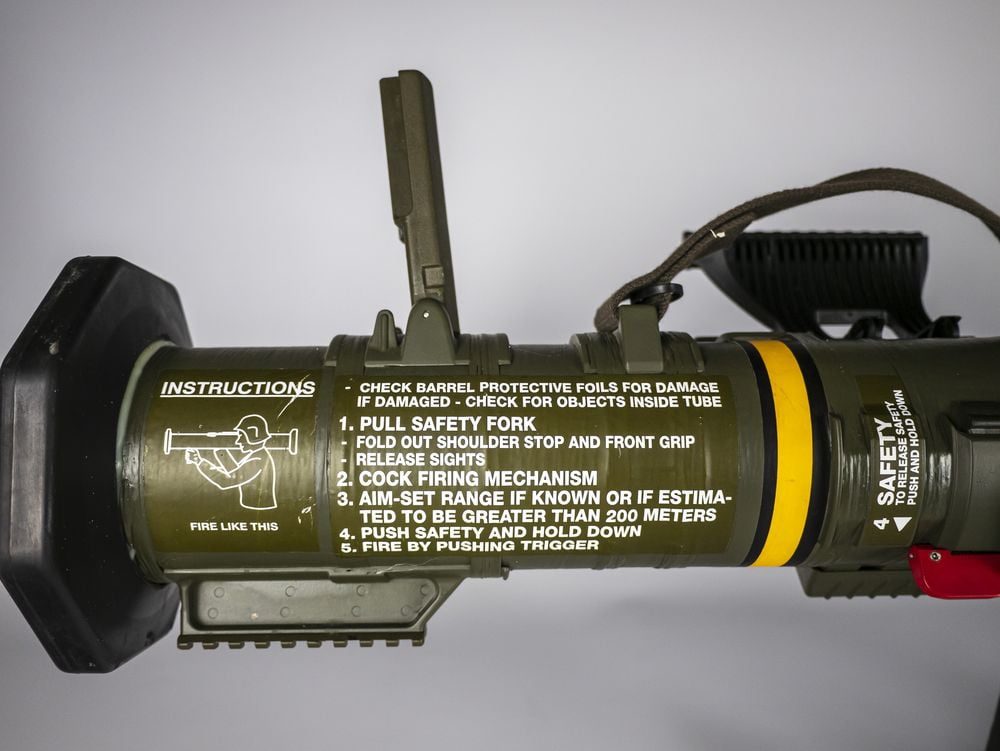
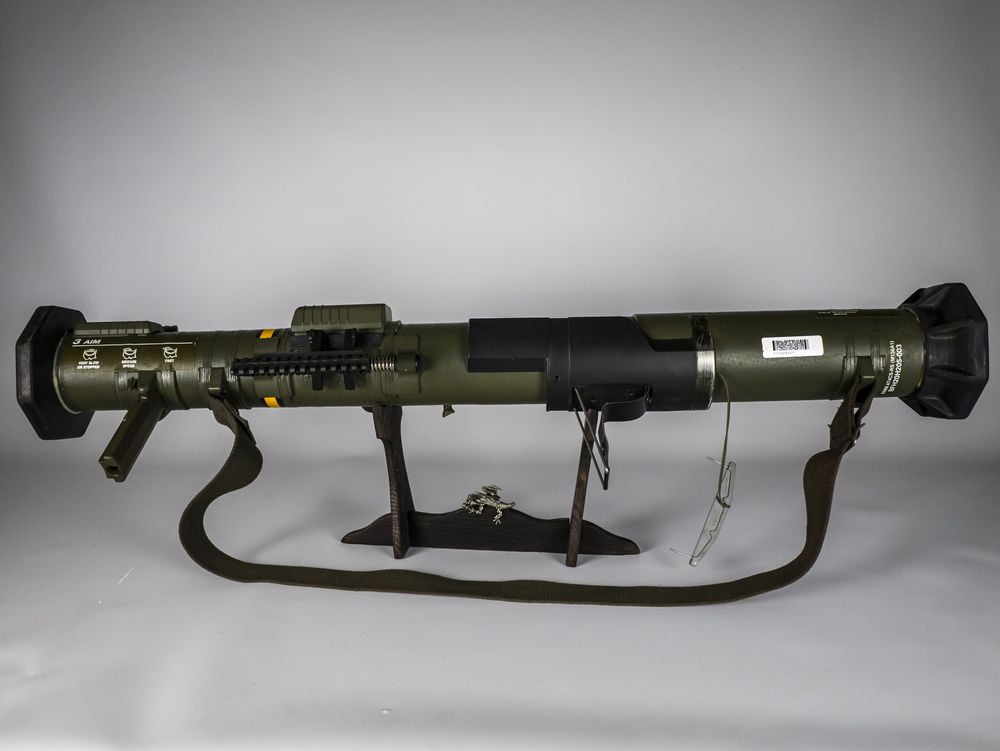
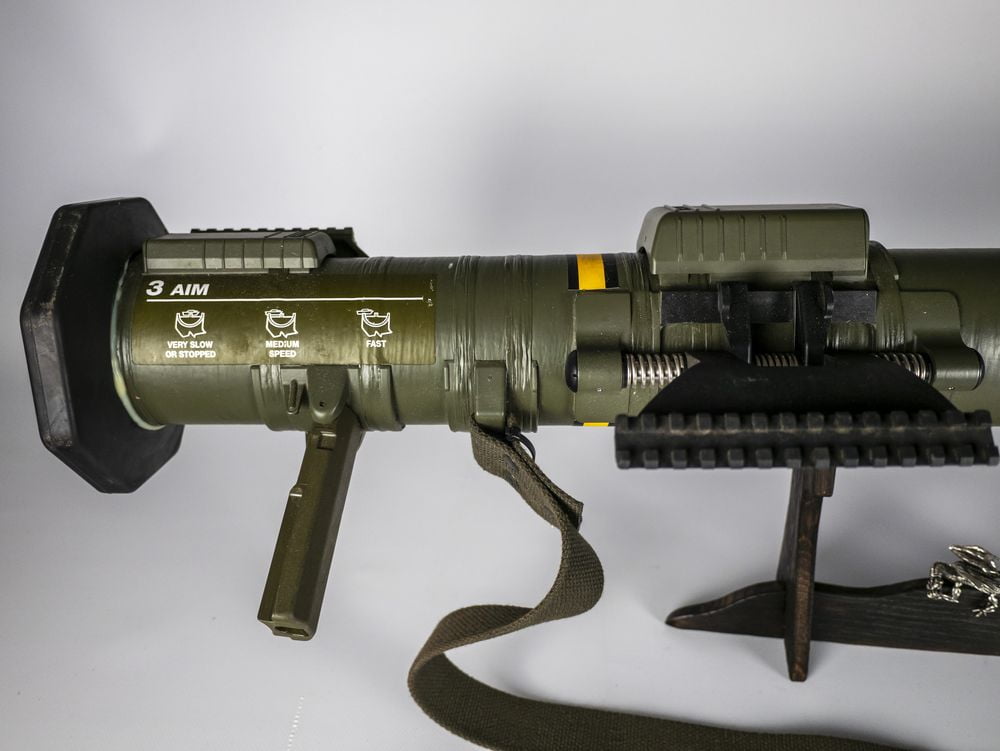
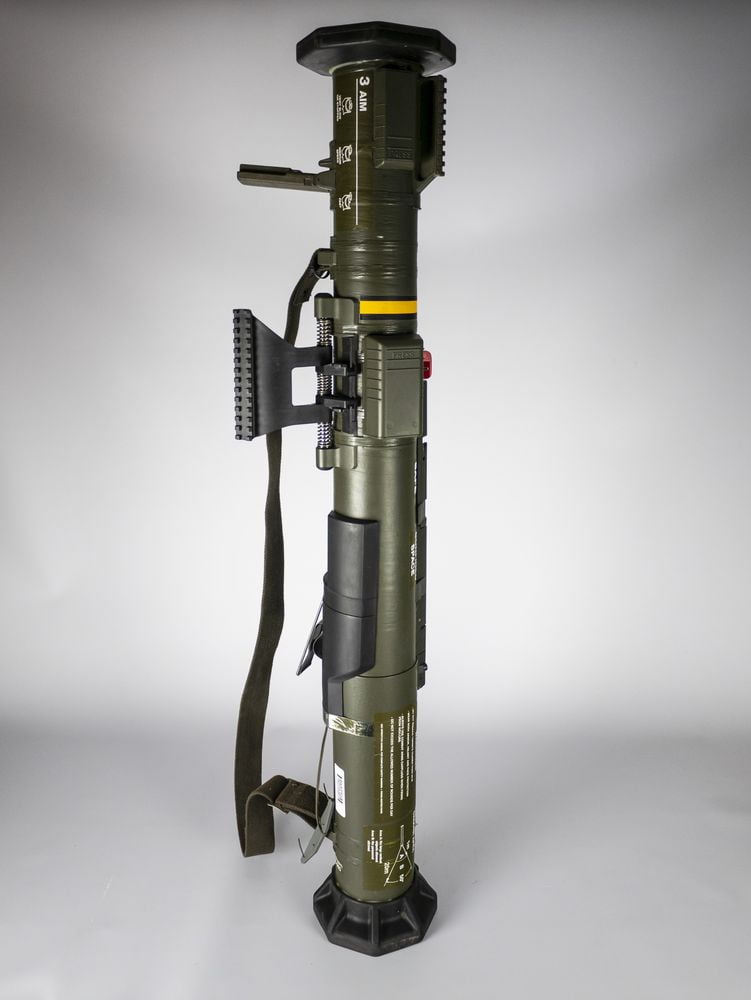
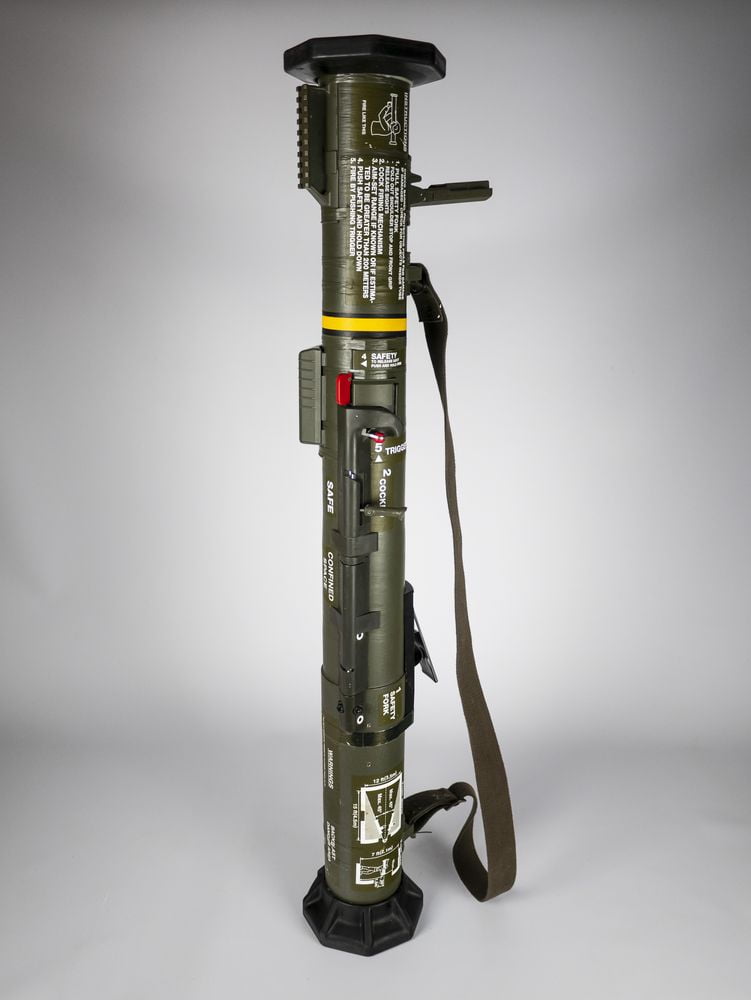
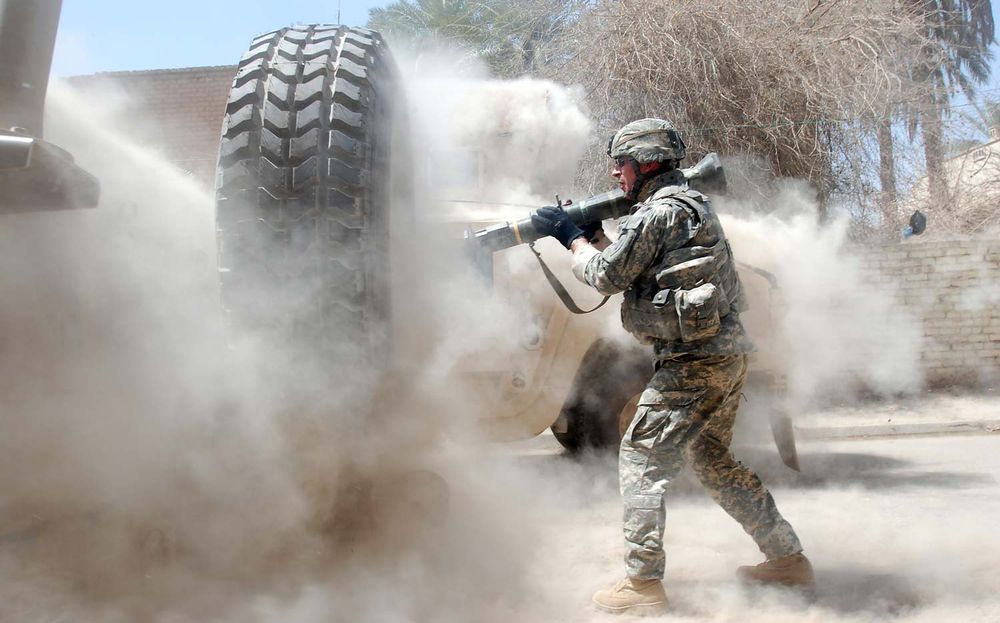
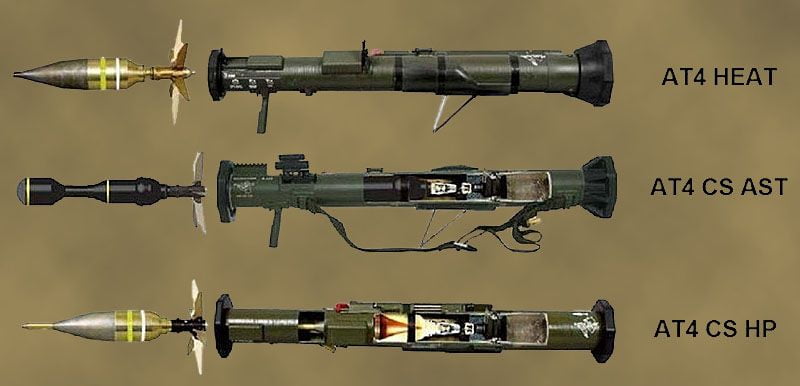
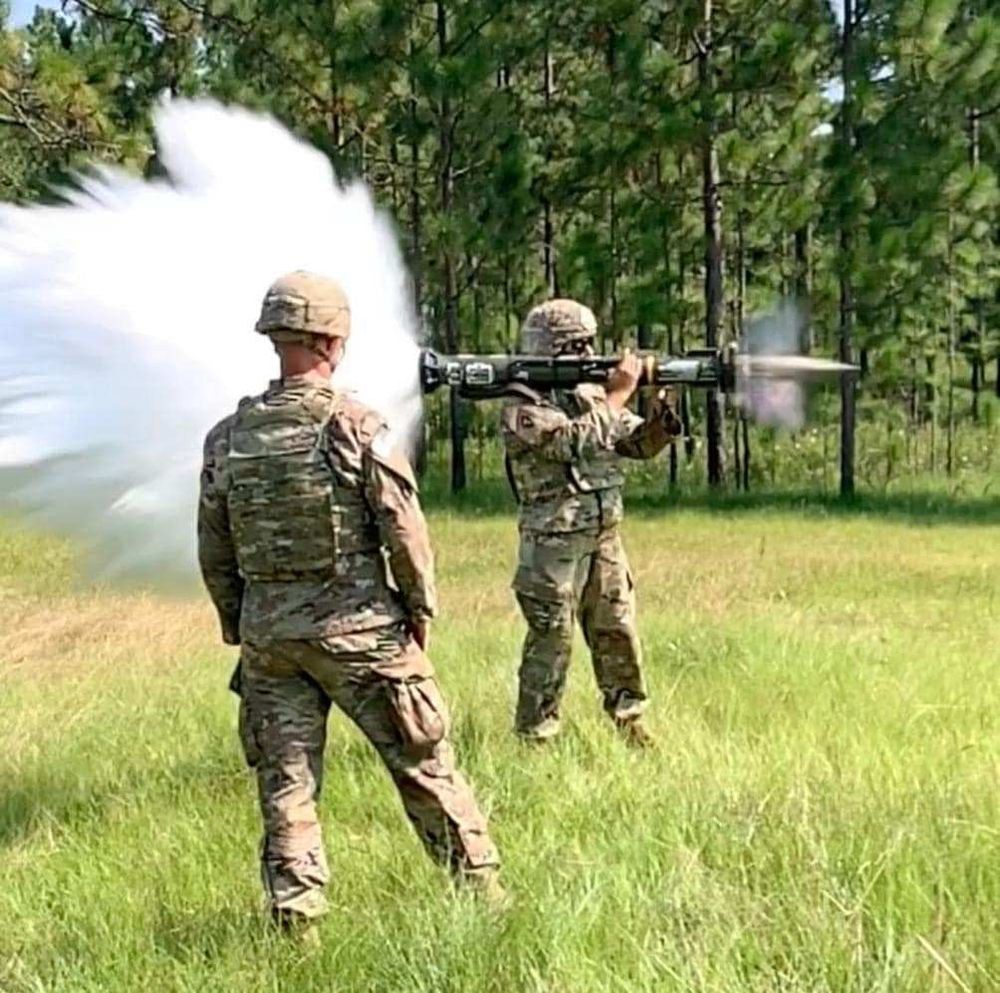
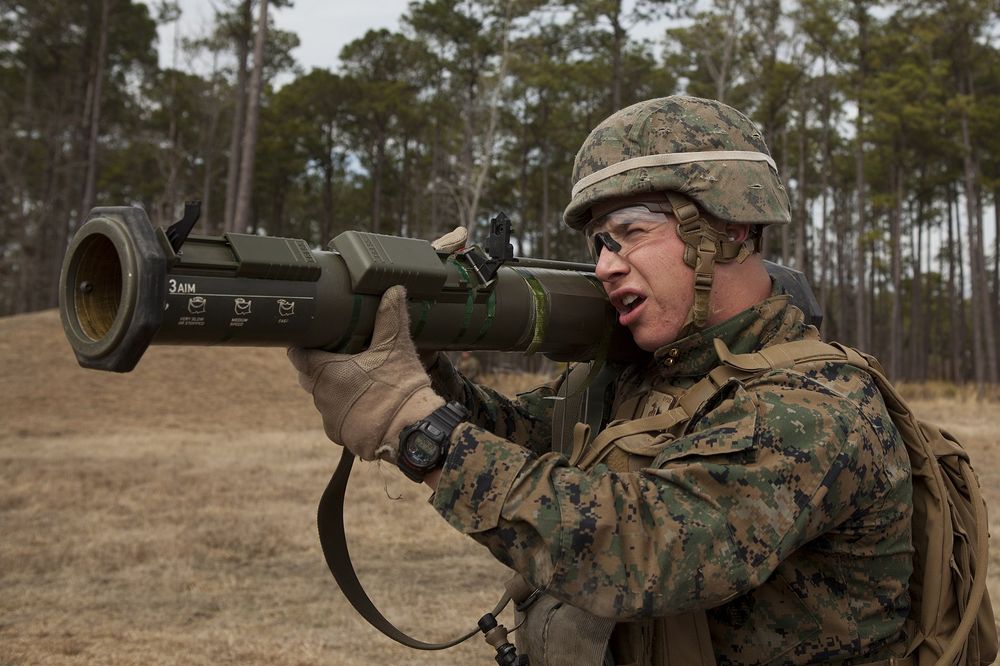
Anti-Tank 4 (CS AST) Firstly, this grenade launchers looks good. It looks very technological and impressive. Before the war, we didn’t have anything like it, but then our allies and friends helped us by providing a certain amount of these grenade launchers for use against the occupier.
Secondly, our military likes to use it because it’s also cool. There’s a lot of information about this grenade launcher on the internet. It’s a Swedish disposable grenade launcher developed by SAAB Bofors Dynamics (Sweden) in collaboration with ATK Corporation (USA).
Specifically, this modification, the CS AST (Anti-structure tandem), is a version of the grenade launcher with a tandem warhead for hitting fortified objects with concrete, brick, and other walls.
The tube of the grenade launcher is not dangerous, it has already been used on the front lines in combat before being handed over to us to be turned into art.
We really enjoy working with this grenade launcher and creating interesting things out of it. We can create an interesting item for you as well.
You can see the grenade launcher in action here: https://www.youtube.com/watch?v=bCSwsnVtgPE&t=98s
Information on the AT4 grenade launcher in English can be found here:
https://en.wikipedia.org/wiki/AT4
Information on the AT4 grenade launcher in Ukrainian can be found here:
https://uk.wikipedia.org/wiki/AT4


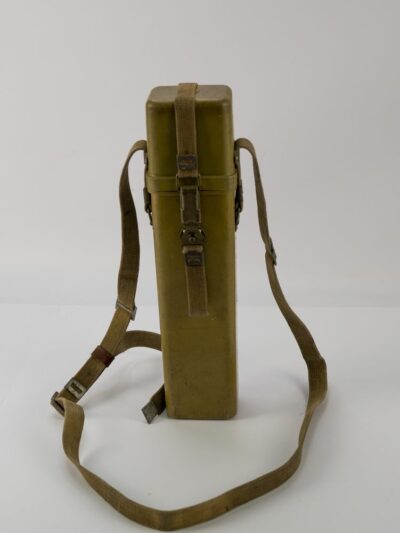
A fine tube from an artillery compass. It has reliable clasps and is a wonderful exhibit and an opportunity for creativity in various styles of its use by the masters […]
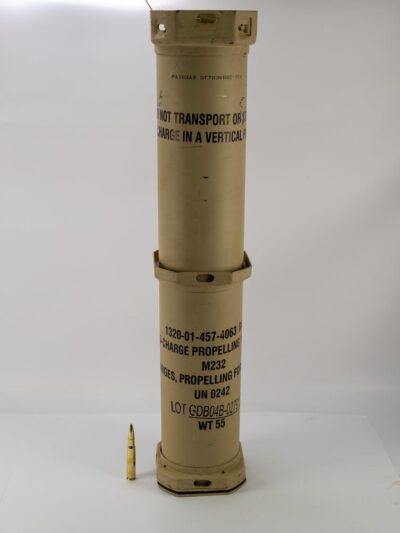
When our allies and friends provided us with M777 howitzers, we were thrilled. These are arguably the best and most reliable howitzers in the world. The 155mm caliber does its […]
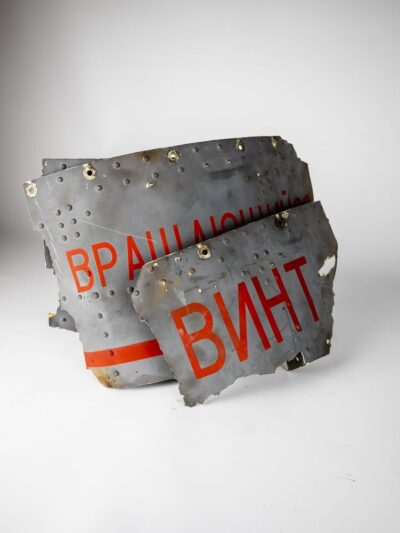
A unique trophy from the war in Ukraine. These are parts of a Russian helicopter MI-8AMTSh (“Terminator”), registration number RF-91882, destroyed by Ukrainian military on March 25, 2022 near Kharkiv. […]
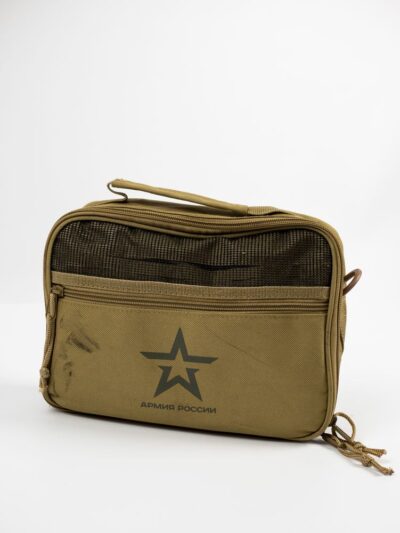
Each soldier of the occupying army is issued such a cosmetic bag. In it, we found a “Russian Standard” cosmetic line, which the occupier seems to have not had a […]

